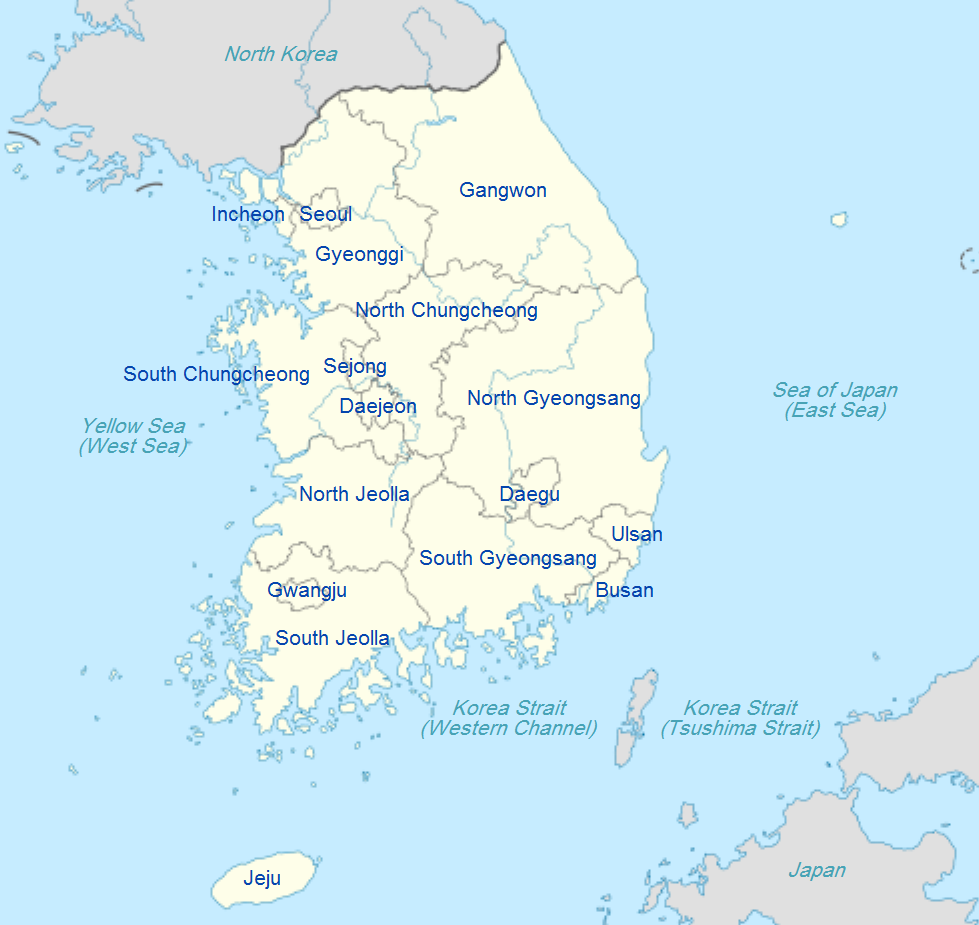South Korea
|
|

Basic Info
South Korea, officially the Republic of Korea, is a sovereign state located in the southern part of the Korean Peninsula. The name "Korea" is derived from Goryeo, a dynasty which ruled in the Middle Ages. Its neighbors are China to the west, Japan to the east, and North Korea to the north. South Korea lies in the north temperate zone with a predominantly mountainous terrain. It covers a total area of 99,392 square kilometers and has a population of 50 million. The capital and largest city is Seoul, with a population of 9.8 million.

Geography
South Korea occupies the southern portion of the Korean Peninsula, which extends some 1,100 km (680 mi) from the Asian mainland. This mountainous peninsula is flanked by the Yellow Sea to the west, and Sea of Japan (East Sea) to the east. Its southern tip lies on the Korea Strait and the East China Sea.
Climate
South Korea tends to have a humid continental climate and a humid subtropical climate, and is affected by the East Asian monsoon, with precipitation heavier in summer during a short rainy season called jangma, which begins end of June through the end of July. Winters can be extremely cold with the minimum temperature dropping below −20 °C in the inland region of the country: in Seoul, the average January temperature range is −7 °C to 1 °C (19 °F to 33 °F), and the average August temperature range is 22 °C to 30 °C (71 °F to 86 °F). Winter temperatures are higher along the southern coast and considerably lower in the mountainous interior.
Summer can be uncomfortably hot and humid, with temperatures exceeding 30 °C (86 °F) in most parts of the country. South Korea has four distinct seasons; spring, summer, autumn and winter. Spring usually lasts from late-March to early- May, summer from mid-May to early-September, autumn from mid-September to early-November, and winter from mid-November to mid-March.
Religion
As of 2005, just under half of the South Korean population expressed no religious preference. Of the rest, most are Buddhist or Christian. According to the 2007 census, 29.2% of the population at that time was Christian (18.3% identified themselves as Protestants, 10.9% as Roman Catholics), and 22.8% were Buddhist. Other religions include islam and various new religious movements such as Jeungism, Cheondoism and Wonbuddhism. The earliest religion practiced was Korean shamanism. Today, freedom of religion is guaranteed by the constitution, and there is no state religion.
Administrative divisions
The major administrative divisions in South Korea are provinces, metropolitan cities (self-governing cities that are not part of any province), one special city and one special autonomous city.
Site Search
News
Random Articals
Weather
Join Our Newsletter
Send This Page to Friend
To Email this page to a friend
1. Use Your Default Email Client
2. Use Our Recommend Page
Online Contact
nouahsark
1438084734
+ 86 158 00 323 707
+ 86 158 00 323 707
nouahsark@hotmail.com


If you like this article please feel free to share it to your favorite site listed below: